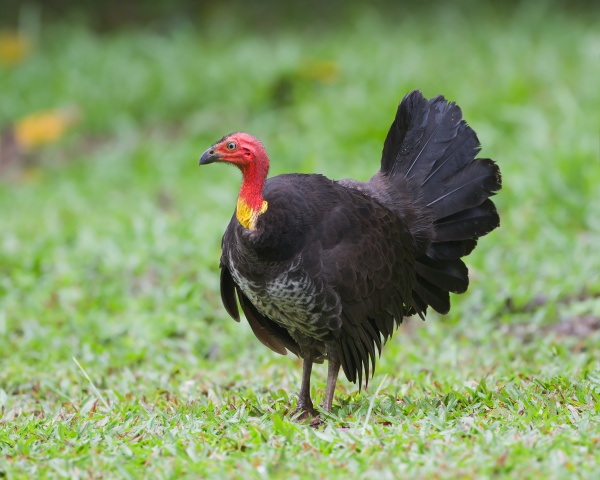Facts About Australian brushturkey
The Australian brushturkey, also known as the Australian brush-turkey, gweela, scrub turkey, or bush turkey, is a prevalent bird species in eastern Australia. It is the largest extant member of the Megapodiidae family and one of three species found in Australia. Despite its name, the Australian brushturkey is not closely related to American turkeys or the Australian bustard.
These birds are quite distinctive, characterized by their substantial size, black plumage, red heads, and fan-like tails. One of their most intriguing characteristics is their unique nesting method. Males construct enormous mounds on the ground using leaves, compostable materials, and earth. These nests provide a site for mating and egg-laying. The heat generated by the decomposing material in the mound incubates the eggs, which are notably large. The males are responsible for building and maintaining these nests, while the females lay the eggs.
Australian brushturkeys inhabit a variety of environments, including rainforests, wet sclerophyll forests, drier scrubs, and open areas. They are also quite at home in urban settings and are frequently seen in backyards in cities such as Brisbane and Sydney.
In terms of diet, brushturkeys are not discerning. They consume insects, seeds, and fallen fruits, which they locate by raking through leaf litter or breaking apart rotten logs with their robust feet. However, this foraging behavior can sometimes be destructive to gardens and agricultural crops, prompting various management strategies in urban areas.
Historically, these birds and their eggs were hunted for food, including by traditional Aboriginal Australians. Today, the Australian brushturkey is protected in Queensland and New South Wales, with stringent fines and penalties for harming or hunting them. Conservation efforts and respect for their natural habitat are essential to ensure the continued survival and thriving of these distinctive birds.
